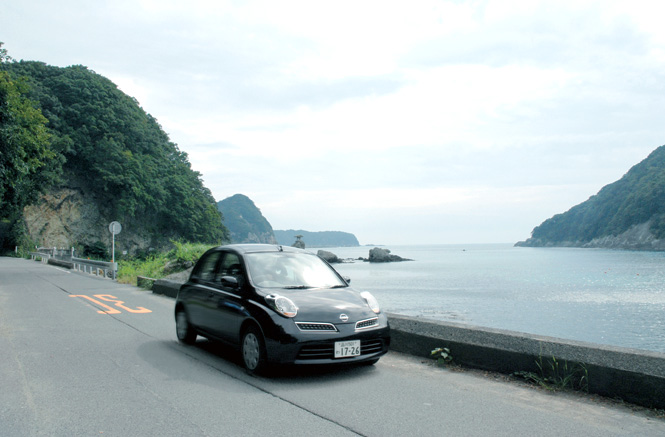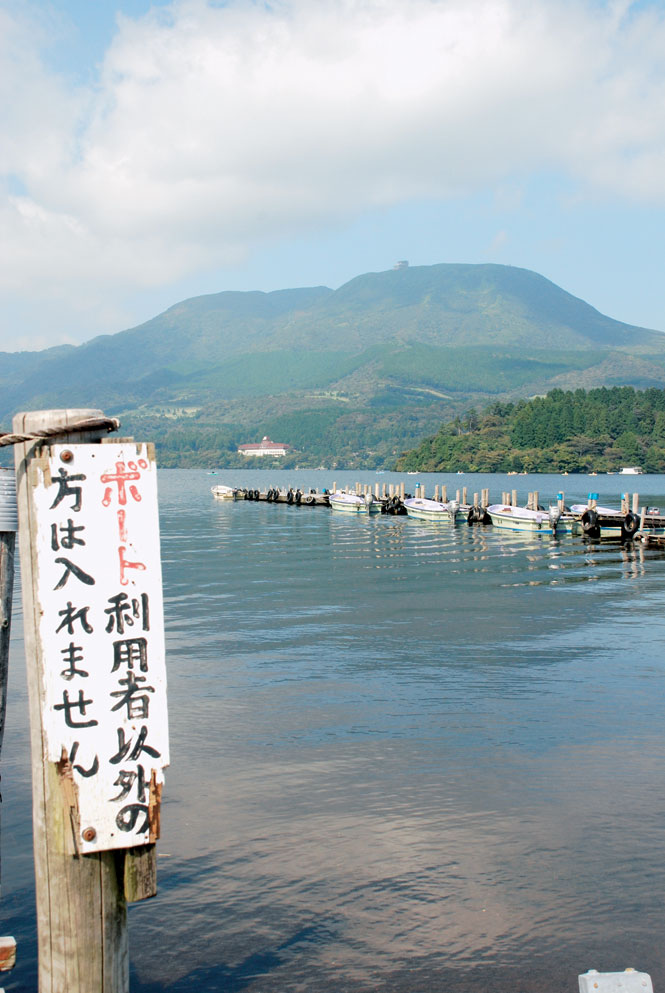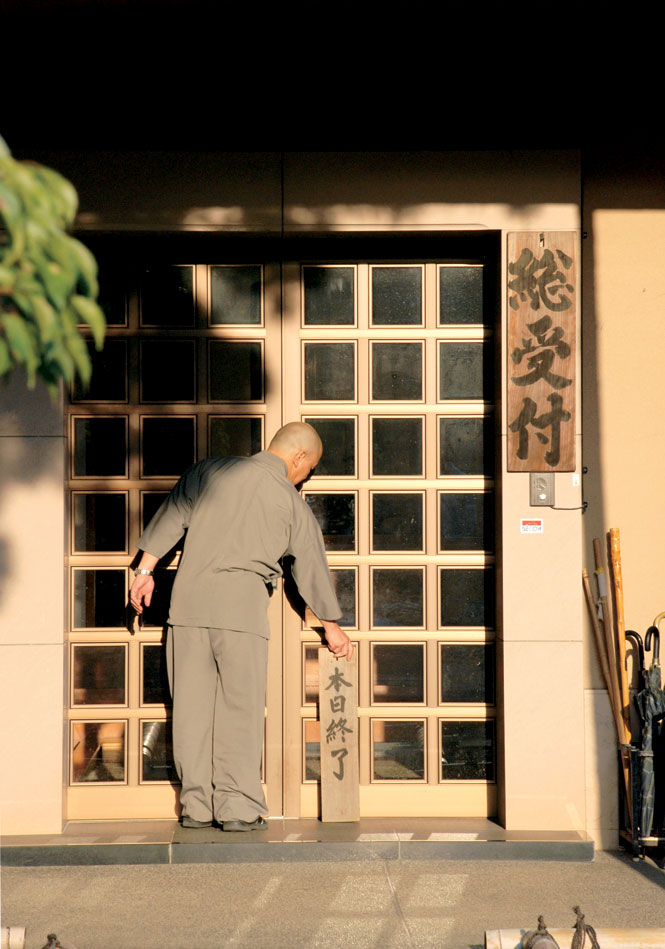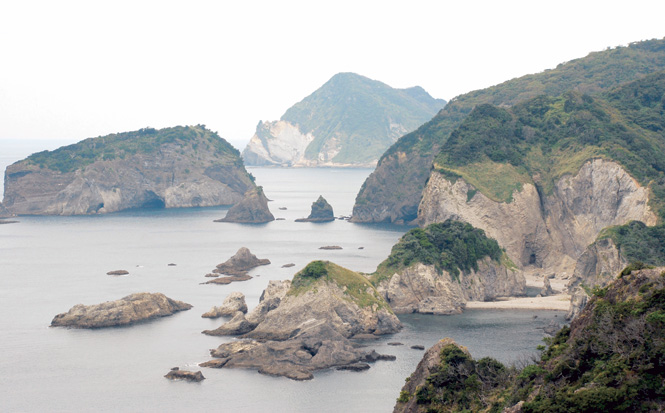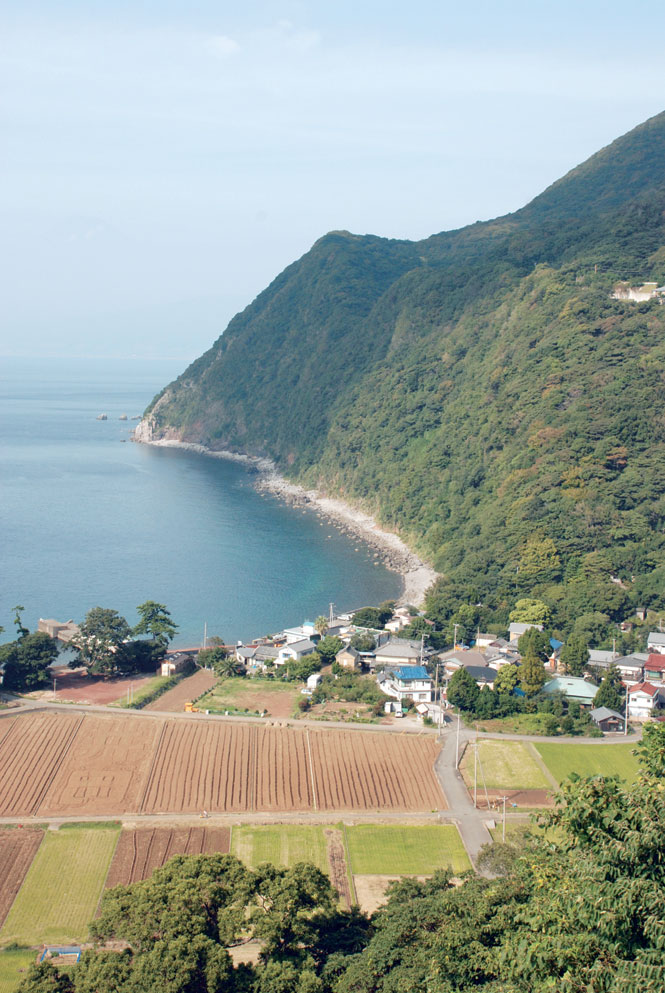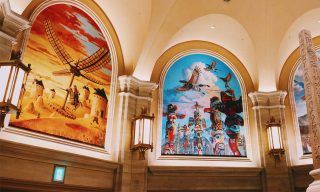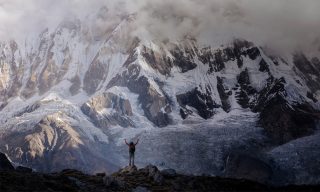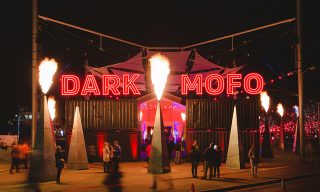By Natasha Dragun
Photographs by Natasha Dragun
We were supposed to be in Hakone by now. The plan was to pick up the car around noon, enjoy the leisurely one-hour drive from Tokyo southwest toward the Izu Peninsula, and check into our hotel in time for a late lunch. Instead, it’s dark and raining, and peak-hour traffic clogs the roads. What we failed to take into consideration was that the 100-kilometer jaunt requires either a map or a decipherable GPS system. We have no map, and our car’s GPS only speaks Japanese—albeit very polite Japanese. We’ve spent the last two hours trying to get onto the Tomei Expressway, and every time we make a wrong turn the GPS’s monotone female voice feels the need to thank us—Arigato gozaimasu—over and over.
“I don’t think I can do this,” sighs Ian, my longtime partner and the designated driver on this trip. It’s not clear whether he’s talking to me or the car. I stay quiet; the GPS keeps squawking. Ian hits the dashboard. “Right. I’m turning this thing off. Last try. If we make it, we make it. If not, we’re spending another night in Tokyo.” Thankfully, Ian’s instincts pay off, and we finally steer onto the expressway that will take us to Hakone, a resort area in the 1,200-square-kilometer Fuji-Hakone-Izu National Park. As we pick up speed, the bright lights of Tokyo’s skyscrapers give way to residential complexes, then to truck stops and neon-lit “love hotels” with names like Queen of Hearts and Two Peas in a Pod.
The rain is hammering down on our jelly-bean-shaped Nissan March as we take the Oi-Matsuda exit onto Route 138. The precipitous, zigzagging road cuts around Mount Kami, at 1,438 meters the highest peak in the Hakone Range. We slow to a crawl for the icy slick that’s beginning to form on the tarmac, and then come to a complete standstill when a thick fog envelops the car. It’s 9 p.m. by the time we reach Gora, one of the many towns in the Hakone area, and pull into the Hyatt Regency. Ian has not spoken for the last hour, and my knuckles are white and sore from clenching our next-to-useless guidebook. “You drove here?” the bemused concierge asks at check-in. “In this rain? In the dark? You’ll want to know where the bar is.”
Shaped by lava flows over tens of thousands of years, Fuji-Hakone-Izu National Park begins in the foothills of Mount Fuji and spills south through Hakone to the Izu Hanto, a craggy peninsula that juts into the Pacific Ocean. Thanks to its volcanic history, this region is home to more than 2,300 hot springs, not to mention some of the best beaches on Honshu. We’ve been told that the area is perennially overrun with day-trippers and weekenders from Tokyo. But last night’s downpour seems to have deterred the crowds, and on the first of our four days exploring the peninsula, the only people we encounter are a handful of locals.
Having spent the morning immersed in a GPS crash course with the Hyatt’s concierge, Ian is quietly confident as we set out to explore the dozens of small towns around Ashinoko, the beautiful pine-flanked lake that scores the valley. Bypassing numerous galleries, museums, and an ancient ropeway to the top of Mount Komagatake, we take our first break at one of the oldest shrines in the area. The Hakone Jinja is hard to miss: bright-red torii gates mark the shrine from the road. But once inside the complex, we find that the buildings are hidden amid a forest of venerable cedars. Save for a few devotees tying paper “wishes” to shrubs, we’re alone to wander the pebbled paths that wind through the towering trees.
We stop for lunch in the small fishing village of Hakone-machi, a 10-minute drive down the road on the south bank of Ashinoko. A wizened noodle-shop owner, who appears as old as the Hakone Jinja itself, serves us ramen with pork and kuro tamago—whole eggs mottled black by the sulfuric water that they’re boiled in. Local legend has it that each egg you eat will add seven years to your life. (The secret to our host’s longevity, perhaps?) I eat three and spend the rest of lunch willing the transformation to take place.
Just outside town, we walk off the meal at the hauntingly beautiful Onshi-Hakone-Koen Park, admiring the wind-sculpted pine trees that creep up to the Imperial Villa, once the summer palace for the Emperor Meiji, above the lake. In the distance, a Disneyesque tourist boat resembling a pirate galleon floats through the mist en route to Moto-Hakone, the next town along. We take a rowboat out onto the water instead, enjoying the first sunshine of the day with a side of cherry-blossom-flavored ice cream.
That night Ian and I sink into the scalding waters of the Hyatt’s Izumi Onsen, performing alternating rituals of kakeyu (cool showers) and hanshinyoku (gradual submersions in the mineral-rich waters) until our skin is pink and tender. Done up in cotton yukata robes and slippers, we make our way to the lobby for pre-dinner sake shots and jamon cut straight from the bone. As we doze by the roaring fire, our Tokyo tribulations seem far away.
Reluctant as we are to shed our yukatas, the promise of yet more hot springs in the historic town of Shuzenji Onsen beckons us southward. The road climbs dramatically through dense pine forest before dropping into a wide valley at the neck of the Izu Peninsula. There are two parts to Shuzenji: our GPS points us in the direction of the original settlement, about three kilometers southeast of the modern city, where a string of small ryokan (traditional inns), rotenburo (outside baths), and restaurants clings to the banks of the Kano River. After checking in, we set off to explore the narrow cobbled alleyways on foot.
Aside from a handful of other tourists, Ian and I seem to have the place to ourselves. We stumble upon a row of deserted amusement park games: stuffed toys hang from the walls waiting to be won, and a half-deflated basketball sags in front of a hoop with flashing lights. Nearby, the Shuzenji temple, from which the town takes its name, is just as quiet, the silence broken only by the rustling of bamboo and the incongruous tones of Moon River, played over the town’s loudspeakers each dusk. The temple’s groundskeeper snoozes in the last of the sun.
Dinner that night is a feast of sweet river fish and roasted boar, a local favorite seasoned with bean paste and served with wild mushrooms, onions, radishes, and mountain herbs including hunks of wasabi root. Wasabi is also the main ingredient in our zen-dera soba—cold noodles served with an eye-watering sauce of sesame and fresh horseradish, which we grate at our own risk.
With fire in our bellies, it seems only fitting to find an onsen to poach our skin as well. The most famous hot spring in town is Tokko-no-yu, said to date from 807 A.D. when the Shuzenji temple was also built. It’s closed for renovations when we visit, but there are dozens of alternatives, including two—one fashioned from aromatic hinoki wood, the other from bluestone—in the basement of our small riverside ryokan. We end the night here, wondering just how much cooking one’s skin can take before one turns into a kuro tamago.
We’re expecting a quiet day exploring the west coast of Izu Hanto—it’s far less touristy than the east, we’ve been told, despite the fact that it commands postcard-perfect views of Mount Fuji on a clear day. Still, public transport through the area is limited, hairpin bends call for skilled driving, and there are few hotels until you reach Dogashima in the south. We love it. From Shuzenji, the narrow road follows the tortuous coastline down a mountainous spine, broken only by old fishing villages tucked away in sheltered bays. We pass La La La Sun Beach and the tiny town of Toi, stopping for lunch at Cape Osezaki, a stony beach popular with divers, and tsunamis, it seems. A huge concrete rampart barricades the town from the beach, and dozens of signs warn visitors of the ferocious potential of the ocean.
We reach Dogashima by early afternoon. Gift shops selling packaged seaweed, coral, and shells line the main street, fronting a spectacular shoreline studded with limestone outcrops. The detritus of ancient lava flows, these cone-shaped islets are punctured with dozens of caves, which we briefly explore by boat before continuing on to Matsuzaki. We’re hoping to make it to Shimoda on the east coast by nightfall, and the winding roads are proving a lot slower to negotiate than we anticipated.
Heading around the tip of the peninsula, our route climbs through lush vegetation before emerging at the craggy headland of Irozaki. A tiny shrine perches ominously on the edge of a sheer cliff face. Below, the deep blue Pacific has cut gashes into the land, leaving behind dozens of small, rocky islands. A handful of public buses run through here every day, but most people have their own wheels and bring with them paragliders, mountain bikes, and surfboards to explore the rugged surrounds. A couple of kilometers north we stop to watch the sunset at Yumiga Beach. Although the waves are virtually nonexistent, dozens of surfers fight over tiny swells; Ian and I are content fighting over flakey cinnamon pastries from the comfort of a beachside café.
It’s dark by the time we reach our guesthouse, a 10-minute drive north of Shimoda on a small hill overlooking Shira Beach. The long stretch of white sand and crystalline waters is widely regarded as the most beautiful shoreline on the peninsula.
Shimoda’s claim to fame dates to 1854 when it served as the landing point for Commodore Matthew Perry’s “black ships,” marking the end of Japan’s era of isolation and the start of diplomatic relations with the United States. The town proves easy enough to navigate: a neat grid of streets lined with white-plaster houses alongside a canal. Antiques stores advertise their wares on rickety chairs under the glow of fairy lights, and red lanterns hang in restaurant doorways to announce dinnertime. On the advice of our guesthouse, we stop at Kiyu for a decadent kaiseki feast that consists of more seafood than we bargained for. The specialty is kinme, a snapper-like fish that is steamed with mirin and scallions. Then come fluffy prawn tempura, a crab omelet, horse mackerel, and sashimi, all washed down with ice-cold Kirin beer.
Although the expressway that we came in on is the fastest route back to Tokyo, we decide to prolong our journey and take the eastern coastal road up the peninsula, along the Jogasaki Coast into Sagami Bay instead. As expected, the scenery—Sea World, mega-malls, huge cruise ships—proves to be the yang to the west coast’s yin, and for the first time in days, we find ourselves negotiating traffic jams as we pass through the brash resort towns of Ito and Atami.
Much too soon, Tokyo’s skyscrapers appear on the horizon. By the time we hit town, the Nissan’s GPS is chattering directions so fast that Ian feels the need to hit the dashboard again. But the GPS is determined to have the last word. As we pull into the rental lot, it jumps at the chance to thank us just one more time: Arigato gozaimasu. And then, finally, silence.
THE DETAILS
Getting There
Singapore Airlines, Cathay Pacific, and Japan Airlines are among the regional airlines offering daily flights to Tokyo. For car rentals, ToCoo! Travel has dozens of outlets across Tokyo. For a small car like the Nissan March, expect to pay about US$60 a day for rental, including insurance. An international license is required to drive in Japan.
Where to Stay
The Hyatt Regency Hakone Resort & Spa (81-460/82-2000; doubles from US$291) in Gora offers a mix of Western and tatami-style rooms, alongside two award-winning restaurants and a hinoki onsen. In Shuzenji Onsen, spend a night at the Yukairo Kikuya (81-558/72-2000; doubles from US$464, full board), a splendid ryokan with a history dating back to the mid-17th century. On Ohama Beach in Shimoda, White Beach Hotel (81-558/23-2234; doubles from US$151) features 20 rooms, each with different retro wallpapers. There’s free Wi-Fi and a spacious outdoor patio.
This article originally appeared in the December 2008/January 2009 print issue of DestinAsian magazine (“Easing through Izu”)

